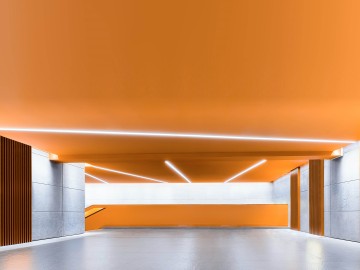
Concrete: Hard on the Outside, Sensitive on the Inside
Concrete – particularly steel-reinforced concrete – was long considered to be virtually indestructible. Now we know better: when water comes into play, stability and indestructibility are quickly compromised. The only thing that can help is effective protection – otherwise the integrity of a structure will soon be at risk.
Bridges, tunnels, railways, roads, you name it: our modern infrastructure is based on concrete. Its outstanding mechanical and physical properties combined with its cost-effectiveness and longevity make it the most commonly used construction material in the world. Each year, roughly 14 cubic meters of it are laid on freeways, over rivers, in channelized waterways and on railroad lines1. Concrete is an ever-present part of our world and has to withstand a lot. And it generally does. With one exception.
1Source: Global Cement and Concrete Association (GCCA)

Water Makes Concrete Unpredictable
Whenever concrete comes into contact with water and moisture, its stability quickly vanishes. The consequences are serious: in Germany alone, one in ten freeway bridges is in need of repair2. What results are constant closures to fix ailing bridges and segments of roads and railways, leading to costly, time-consuming detours. Of course, this is partly due to greater and greater traffic volumes on infrastructure that is decades old. The main cause, however, is perfectly ordinary: rain and snow, spray and run-off all eat away at concrete over the long run.
2Source: Germany’s Federal Ministry for Digital and Transport
The Destructive Power of Water
All damage that occurs in concrete structures is triggered by moisture penetration. Capillary action draws water into the porous material – even working against gravity. When this happens, the water frequently carries aggressive substances into the concrete, such as the chloride ions present in seawater or dissolved road salt. The consequences are serious, particularly for steel-reinforced concrete.
A Powerful Combination
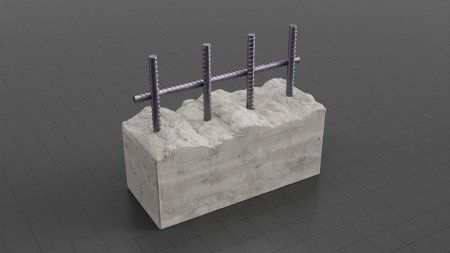
Concrete reinforced with steel combines the compressive strength of concrete with the tensile strength of steel. The high alkalinity of the fresh concrete passivates the steel.
Moisture Penetration
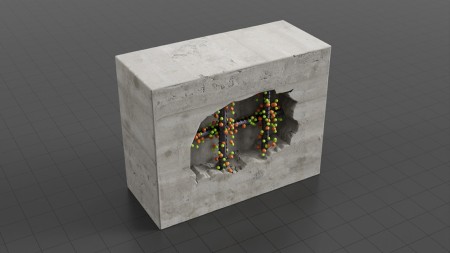
Salts (such as chlorides from road salt or seawater) and acidic gases (e.g. CO2) penetrate concrete along with water.
Hidden Damage
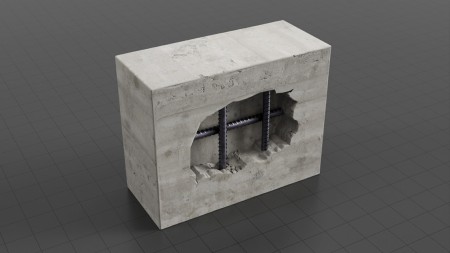
Once chlorides and acidic gases reach the steel, they start eating away at its protective, passivating barrier. Initially, this produces sporadic pitting corrosion that cannot be seen from the outside.
The Damage Becomes Visible
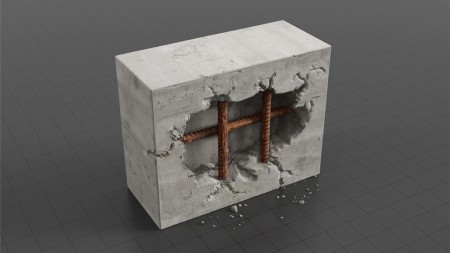
If the rust spreads, it increases the volume of the steel. The resulting force of expansion causes the concrete layer above the reinforcing concrete to flake. Only then is the damage visible from the outside, and the structure has sustained permanent damage.

Besides being costly and time-consuming, freeway bridge repairs usually go hand-in-hand with road closures.
Water Damage Has Many Faces
Steel-reinforced concrete is not the only material susceptible to water damage, however. Ordinary concrete with no reinforcing steel is sensitive to moisture as well. The damage can take a number of forms:
- Chemical corrosion, e.g., the destruction of binders by acidic gases (SO2, NO2, CO2)
- Cracks due to swelling and shrinkage
- Frost and freeze/thaw damage due to road salt
- Blooming and salt damage when concrete dries out and salts crystallize
- Lime leaching
- Mold
- Dirt pickup and stains
- Fungal, moss, lichen and algal growth
Impregnation Helps: SILRES® BS and GENIOSIL® Protect Concrete
If you want to make shoes or clothing waterproof, you simply impregnate them with an appropriate spray. Does that work for bridges, tunnels and buildings too? Absolutely! Hydrophobic impregnation is the most efficient way of protecting concrete structures and extending their service life. Our SILRES® BS and GENIOSIL® brands include a wide selection of silane- and siloxane-based products that can be easily painted or sprayed onto concrete surfaces. Here they penetrate deep into the concrete, providing long-term protection by preventing water – and the aggressive substances it contains – from being drawn into the material via capillary action. Unlike the effects of a film-forming coating, protection in this case lasts a long time, even if the surface sustains damage.
To fully understand how our SILRES® BS and GENIOSIL® products work and what makes them indispensable for concrete surface protection, download our comprehensive guide. Please download the interactive pdf file to enjoy its full functionality.

Silanes – a Stable Protective Shield for Concrete
Silanes do an excellent job of repelling water without compromising water-vapor permeability. This is due to the extremely stable Si-O-Si structure of the silane molecule, which forms a strong covalent bond with the silicate matrix in the pores and capillaries of the concrete. The organic group represented by the letter ‘R’ generates the hydrophobicity.

Hydrophobic impregnation can be simply sprayed onto concrete, where it forms a lasting protective shield.
Hydrophobization Is Better than Making Repairs
Making concrete structures hydrophobic does more than protect the concrete itself – it is also good for the environment, saves the taxpayers’ money and, last but not least, calms the nerves of everyone who depends on functioning infrastructure. Repairing bridges, road surfaces, etc. costs roughly ten times more than preventive hydrophobization. It also requires frustrating road closures and traffic detours. Plus, protecting concrete represents an active approach to preserving resources and protecting the climate. After all, the more we reduce our need for repairs and new construction, the lower our CO2 emissions and our consumption of resources and energy will be.
All SILRES® BS and GENIOSIL® Benefits at a Glance

Questions?
Use this straightforward form to contact our concrete protection experts directly. We’ll get back to you as soon as we can!
Contact us nowInterested in Learning More?
Go to our product portal for a wide variety of SILRES® BS and GENIOSIL® products offering lasting protection for concrete infrastructure and buildings.
To the product portal




